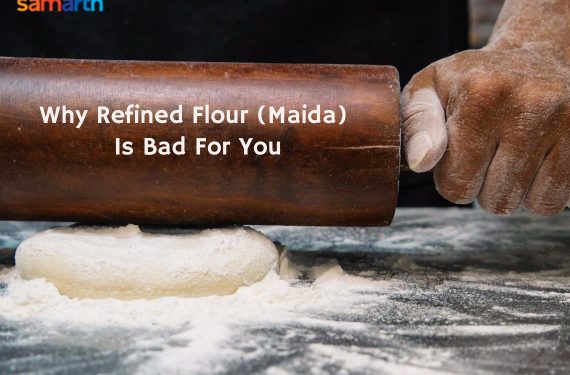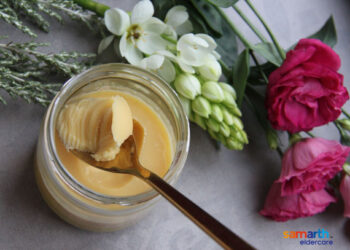Refined Flour or Maida is not good for us, and we have heard it many times by now. While in the Western world, they use this for cakes, bread, buns, burgers, pizzas, and noodles, in India too, the usage is rather high. Almost all our savories will either fully or partially be made of Maida. So, we have samosas, kachoris, cakes, white bread, even the diamond cuts, chaklis, etc., that are made from Maida. Also, there are many sweet items too that include Maida like the malpoa, halwa, gulab jamun, poli, badusha, gujia, and the all-time favorite jalebi. So, it looks like, cuisines across the world are influenced highly by Maida and yet we are told to avoid it. So, what could be the reason why Maida or refined flour is not good for us and is known as a White Poison?
What is Maida?
To understand why it is not good for us, we need first to understand, how Maida is made. It is made from wheat, and that is supposed to be healthy. However, while refining the flour, something different happens, which makes it not so good for our health. Wheat has wheat germ and wheat bran, and the endosperm of this is removed, when refining. This endosperm is actually what makes wheat healthy and aids in our digestion too.

Join Now >
However, when we use Maida since it is missing the digestive endosperm, it uses the nutrients in our body to help the digestion, thus depleting our body of vital nutrients. This is also the reason why you find certain products would have markings called enriched or fortified to indicate that they have artificially enriched the flour to put back some nutrients. That makes it slightly better, but not as good as the natural ones. This is why eatables made from Maida, can be bad for our health.
Maida affects your blood sugar levels
While people with diabetes may have refrained from eating sweets, what they do not know is that eating too many products made from refined flour is equally harmful to them. When you eat Maida based products, it immediately releases sugar into your blood because of its high Glycemic Index (GI). This puts pressure on the pancreas to regulate the same by producing more insulin. This may work in the short run, however, in the long term, the pancreas may fail, and the person may end up becoming diabetic.
Hence, to prevent diabetes, or to keep your blood sugar level regulated, if you have diabetes, eating snacks made from Maida needs to be controlled. That’s not all; the high level of glucose in the blood can also affect the heart, the eyes, and even act as a cause in arthritis. Refined flour also increases the level of your bad cholesterol, which is why it is not good for your blood pressure and heart. Consuming too much Maida can make you obese too.
Digestive issues
Apart from what is mentioned above, about the endosperm and digestive problems, it is believed that Maida turns into a kind of glue in our intestines, making it difficult to digest. It has no fiber, and slows down the metabolism, and can even make you feel sluggish.
Affects bones
Why would Maida affect your bones or aid in your arthritis? Well, after refining, since all nutrients are removed, Maida is acidic. Hence, to balance the acidity, the body uses Calcium from the bones, which in turn reduces the bone density. Also, it is this acidity that aids in inflammation, which is a primary cause of arthritis.
Consuming Maida often can also lead to issues like headache, stomach ache, migraines, mood swings, stress, etc. However, when we look around us, it appears Maida has invaded our life from the breakfast cereals to almost every sphere. So, is it possible for us to switch from Maida and eat healthily?
Alternates
People are slowly realizing the importance of reducing the intake of refined flour, and it is now being replaced with Ragi (Millets), Atta (whole wheat flour), Bajra flour, Jowar flour, etc. If not fully, at least a mix of these flours can be used to reduce the quantity of Maida used. There are many noodles and pasta manufacturers that also use semolina and avoid Maida. These are good alternates that can be used to stay healthy.











